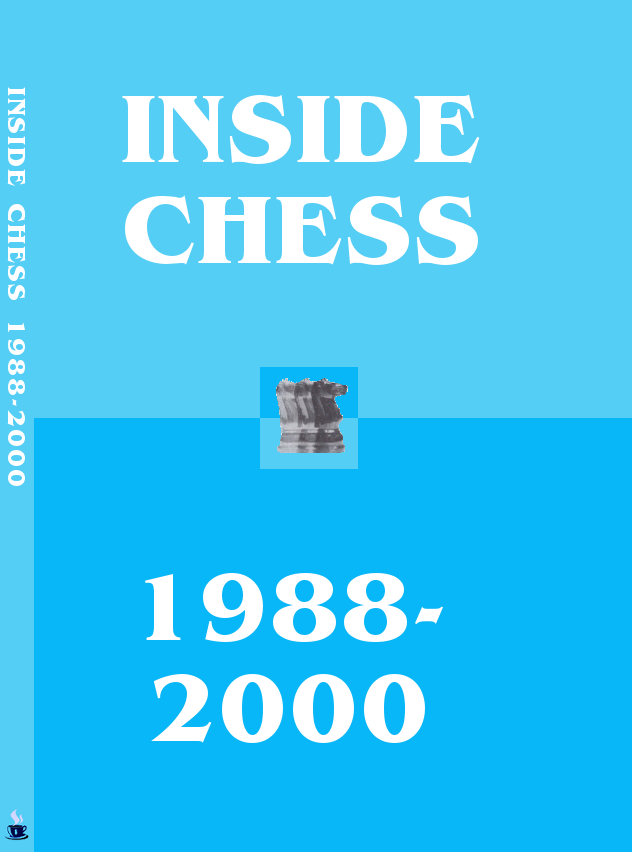We are pleased to announce the availability of the ChessEdu.org Step by Step: Mate Workbook 1.
Step by Step: Mate is designed to improve your checkmate pattern and visualization skills. The premise is simple, try to solve the mate in three position in the first diagram. If you are unable to solve for mate in three, refer to the following diagrams in which you can solve Step-by-Step for mate-in-one, mate-in-two, and then mate-in-three. You can also utilize the puzzles as exercises or lessons in a classroom setting in conjunction with the ChessEdu.org curriculum. Spaces are provided for answers to be written. The answers are given at the end of the book, along with the complete game scores.
Game examples are taken from the golden age of chess play from as far back as 1830 right up to the present day. While there are some classic brilliancies of chess play, including examples from world champions Anand, Karpov, and Kasparov, there are also many examples from regional competitions in the North East area of the United States featuring local international masters. Beyond over-the-board play, correspondence play is represented among the puzzles as well. In a few examples, the checkmate is based on a missed opportunity that was overlooked during the game. In all, forty-three opening systems are featured in the 150 complete games. Readers are encouraged to play through the entire game to see how the final positions came about. Beyond solving for a winning attack, try to find an improvement for the defender as well! An index for reading algebraic notation is provided, as well as indices of players and openings.
Nearly everyone can find a mate-in-one move, but visualizing three moves ahead is exponentially harder to a surprising degree. Working through these examples will help you memorize common mating patterns and sharpen your intuition as to when a mating attack is warranted by the position, even when it involves sacrificing material. You will learn to combine multiple tactical themes to create crushing mating attacks. There are a total of 150 exercises, with 600 diagrams, and 450 puzzle challenges.
Here is an example taken from our feature column!
Step by Step: Mate #67
By Mark Donlan
Solve for White to Mate

[FEN “3rkr2/1R2bpp1/p1q1p3/4P3/4N3/P4Q1P/5PP1/3R2K1 w – – 0 29”]
White mates in one

[FEN “4kr2/1R1rbp2/p1Q1pp2/4P3/8/P6P/5PP1/3R2K1 w – – 0 31”]
1)__________ __________
White mates in two

[FEN “3rkr2/1R2bp2/p1q1pp2/4P3/8/P4Q1P/5PP1/3R2K1 w – – 0 30”]
1)__________ __________
2)__________ __________
White mates in three

[FEN “3rkr2/1R2bpp1/p1q1p3/4P3/4N3/P4Q1P/5PP1/3R2K1 w – – 0 29”]
1)__________ __________
2)__________ __________
3)__________ __________
Khalifman,Alexander (2615) – Burmakin,Vladimir (2530)
RUS-chT St Petersburg (3), 18.05.1999
Caro-Kann Advance [B12]
1.e4 c6 2.d4 d5 3.e5 Bf5 4.Nf3 e6 5.a3 Bg4 6.Nbd2 Nd7 7.Be2 Ne7 8.0-0 Nc8 9.h3 Bh5 10.b3 c5 11.c4 dxc4 12.Nxc4 cxd4 13.Nxd4 Bxe2 14.Qxe2 Ncb6 15.Rd1 Nxc4 16.Qxc4 a6 17.Nf3 Qc8 18.Qd4 Qc6 19.Be3 Nc5 20.Bg5 Qd7 21.Qe3 Qb5 22.b4 h6 23.bxc5 hxg5 24.Nxg5 Bxc5 25.Qf3 Rf8 26.Ne4 Be7 27.Rab1 Qc6 28.Rxb7 Rd8 29.Nf6+! 1-0 [29…gxf6 (or 29…Bxf6) 30.Qxc6+ Rd7 31.Qxd7#]
A PDF file of this week’s Step by Step puzzle, along with all previous puzzles, is available in the ChessCafe.com Archives.
© 2015 Mark Donlan & ChessEdu.org. All Rights Reserved.


Leave a Reply